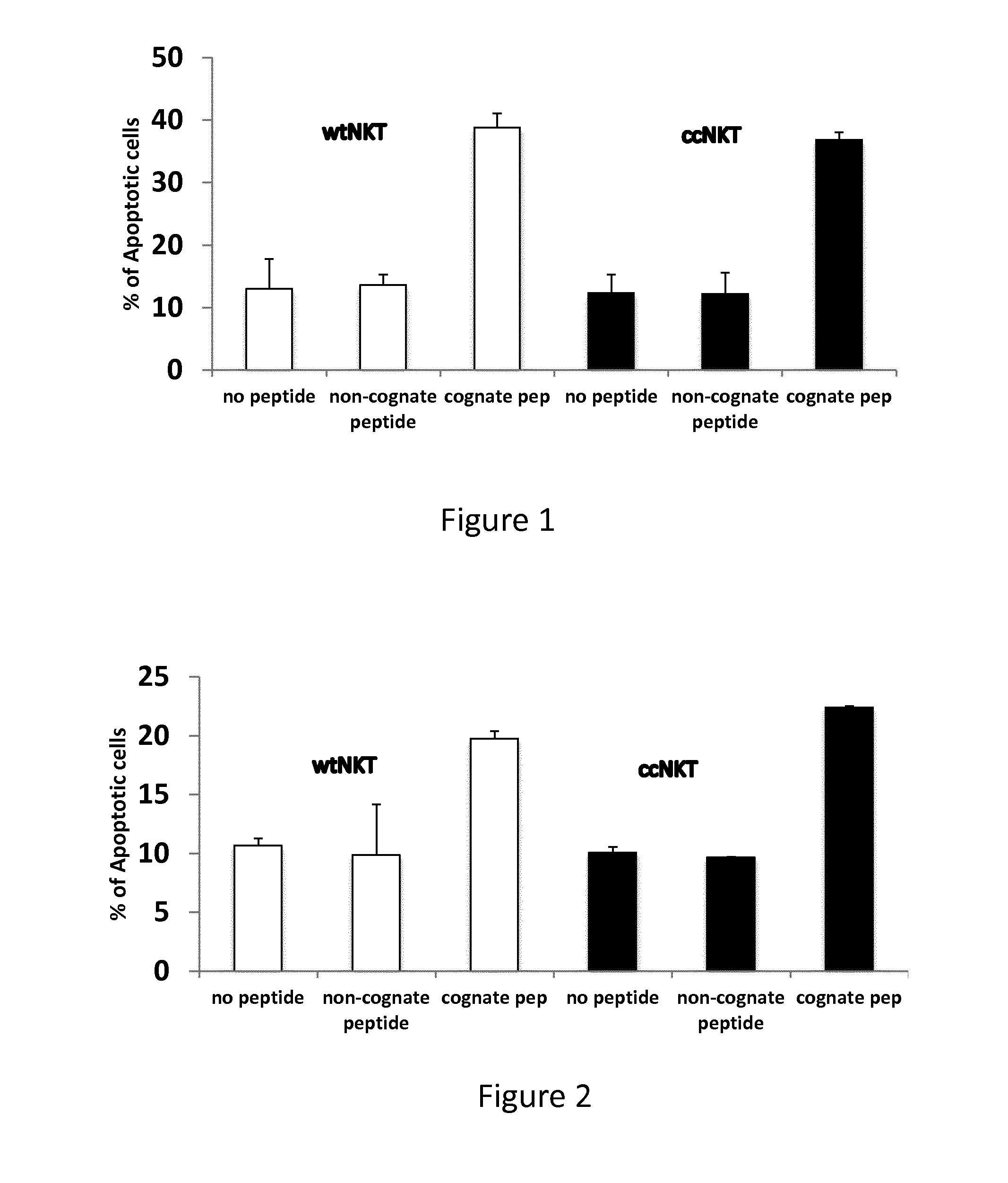Methods for induction of antigen-specific regulatory t cells
a technology methods, which is applied in the field of methods for induction of antigen-specific regulatory t cells, can solve the problems of inability to reverse the acquired phenotype, low number of antigen-specific natural regulatory t cells in the periphery, and inability to expand in vivo or even in vitro. methods that are not well defined and reliabl
- Summary
- Abstract
- Description
- Claims
- Application Information
AI Technical Summary
Benefits of technology
Problems solved by technology
Method used
Image
Examples
example 1
Induction of Apoptosis In Vitro
[0125]Gene therapy and gene vaccination using viral vectors cannot be practiced due to a strong immune response elicited in recipients of gene therapy or gene vaccination towards proteins of the viral vector backbone wherein a therapeutic gene is cloned. It would therefore be advantageous to suppress such response against the viral protein of the backbone of the viral vector, thereby allowing long-term expression of the transgene or strong immunogenicity due to the persistence of the immunogen. The present example illustrates the use of NKT cells specific for antigenic determinants of the viral capsid to eliminate antigen-presenting cells presenting CD1d-bound epitopes.
[0126]Antigen-presenting cells (APC) are prepared from C57BL / 6 mice and loaded with a peptide encompassing a CD1d-restricted NKT cell peptide epitope of hexon-6 capsid protein of adenovirus 5 vector used for gene therapy or gene vaccination.
[0127]Thus, the following peptides are used:
IAF...
example 2
Isolation of Apoptotic Bodies
[0133]The supernatants of the apoptotic cells obtained in Example 1 are collected and submitted to two centrifugation steps (500×g, 5 min) to remove cells. The supernatants were then filtered through a 1.2 μM hydrophilic syringe filter. After centrifugation at 100,000×g for 30 minutes, apoptotic bodies contained in the pellet are harvested and used for cell experiments.
[0134]Alternatively, apoptotic cells and apoptotic bodies can be isolated by affinity using antibodies against cell surface components expressed as a result of apoptosis. An example of these are anti-thrombospondin antibodies. In a preferred preparation step, anti-thrombospondin antibodies are covalently coupled to magnetic microbeads. After incubation with gentle shaking for 1 h at 20° C., magnetic beads are retained on a magnet. Apoptotic bodies are then recovered by elution with slightly acidic buffer.
[0135]These methods are described in the prior art. See for instance Schiller et al. (...
example 3
Generation of or Obtaining Immature Dendritic Cells (iDC)
[0136]Bone marrow progenitor cells are obtained from upper and lower knee bones. B and T lymphocytes are removed by magnetic depletion with CD19 and CD90 microbeads, respectively. The negative fraction containing the iDC progenitors is resuspended in serum free medium containing 500 U / ml recombinant GM-CSF and seeded (3×106 cells / ml) on tissue culture plates and kept at 37° C. Cells are washed every other day for 6 days, avoiding breaking the aggregates. On day 6, iDC aggregates are removed, washed and added to a new plate. On day 7, cells are harvested and used in assays. These methods are described in the prior art. See for instance Curr. protocols Immunol., Wiley editors, vol 1, suppl. 86, 3.7.10-12.
PUM
 Login to View More
Login to View More Abstract
Description
Claims
Application Information
 Login to View More
Login to View More - R&D
- Intellectual Property
- Life Sciences
- Materials
- Tech Scout
- Unparalleled Data Quality
- Higher Quality Content
- 60% Fewer Hallucinations
Browse by: Latest US Patents, China's latest patents, Technical Efficacy Thesaurus, Application Domain, Technology Topic, Popular Technical Reports.
© 2025 PatSnap. All rights reserved.Legal|Privacy policy|Modern Slavery Act Transparency Statement|Sitemap|About US| Contact US: help@patsnap.com


